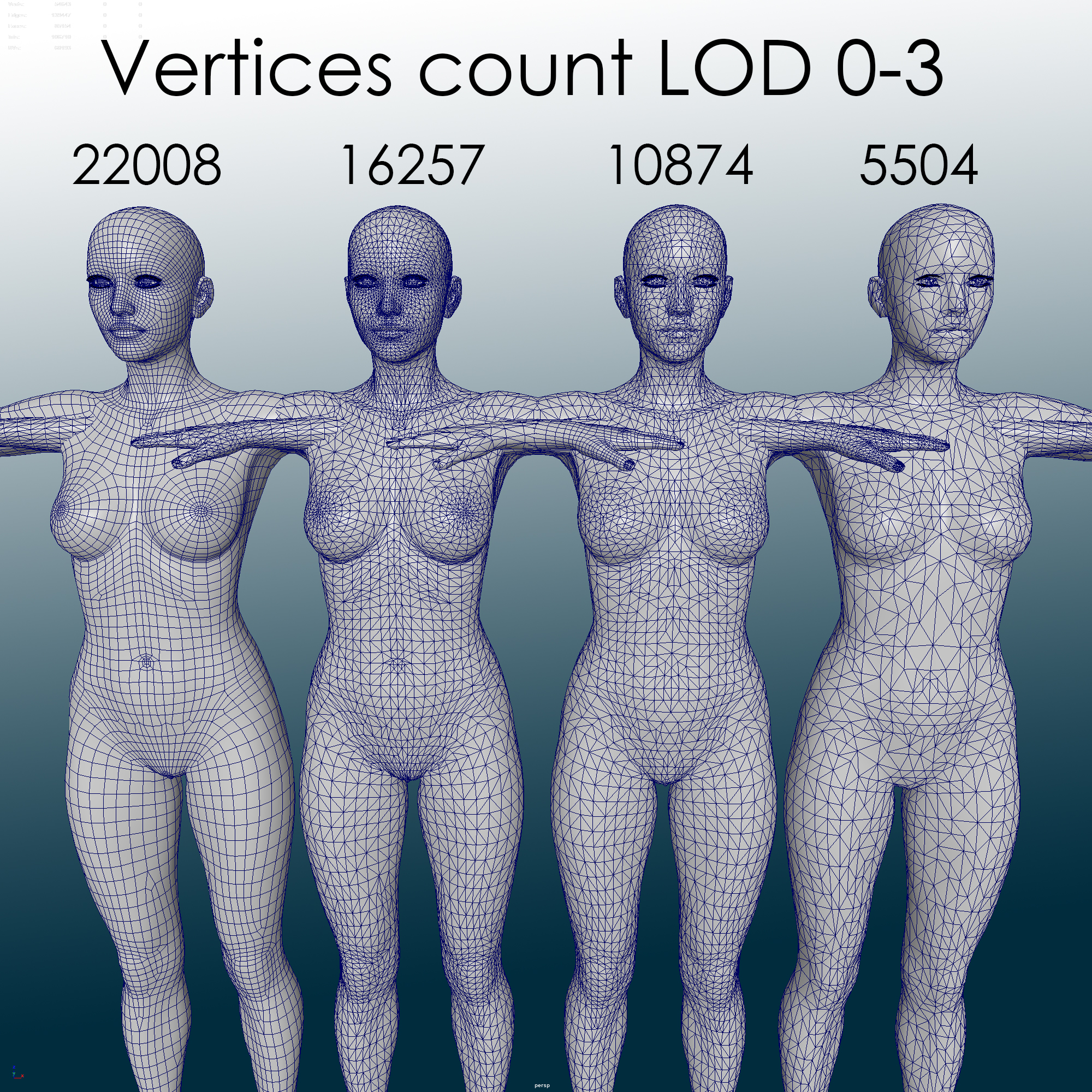Dev update november 2017 - VR & LOD

Last few weeks I have been working solely on VR implementation. It’s apparent that to make good foundation for VR, it’s all about optimization, optimization and optimization.
A choppy and lagging VR experience is no good experience at all, and the impact of poor performance, artefacts, frame skipping etc, is much more severe in VR then on a screen. Poor and lagging VR will very easily result in an uncomfortable and nauseating experience resulting in headaches and dizziness.
There are many factors and I have been learning a whole lot of grate new things. You can do a lot with tricks and tuning, lighting, post processing, turning off features etc, etc, but in the end it all comes down to how many vertices and faces you have in your scene, or your polycount, for your graphic card to process. The resolution of your 3D objects is at the lowest key level of optimization for you game. Reducing resolution of an 3D object also reduces quality, but boosts performance. There is a trade of, and you want to both have acceptable quality and performance. There are many tricks of the trade to achieve this but one of the key methods is to implement LOD, Level of Detail. When you look at an object from afar you want be able to see the details and so you can have a lower resolution without losing perceived quality, but as you get closer you will have to increase the resolution to sustain the quality. We do this by making multiple meshes for an object with different resolutions from low to higher, and then we tell the game engine when to use witch level of detail. You can also use this to scale performance vs. system capabilities, as for example to say that max LOD should be capped at a lower level than normal. This also give you more flexibility to overall optimize and prioritizing objects in your scene, giving less important objects a low resolution and important object higher resolution.
As such I have now been working on making LOD meshes for all my object, be it inventory, hair, clothing and body. Static meshes are the simplest ones. There are nice features for making LOD’s for static meshes in UE4, but it all have to be set up correctly. Skeletal meshes that includes morphs, like body, hair and clothing, are a different story. E.g. the body we are using now, have about 850 morphs, like body modifications and facial expressions, that I want to be able to use later on in the game development. So I had to find an reasonable effective workflow for reducing mesh sizes while keeping morphs, and skin/skeletal information. And I have, but it was necessary to invest in some software to do this in a practical way. And I was able to do this now, thanks to my Patreon supporters. Thank you!
I’m hoping to and aiming towards a first VR release some time in December.
Thank you for your support!
Get The Dirty gynodoctor's fertilization clinic (NSFW)
The Dirty gynodoctor's fertilization clinic (NSFW)
High end adult game project, created with Unreal Engine 4.
| Status | In development |
| Author | GynoGames |
| Tags | Adult, doctor, Erotic, gyno, NSFW, sex, Unreal Engine, unreal-engine-4 |
More posts
- V. 0.3.1 Released - Scalability/Graphics Settings ++Nov 14, 2017
Leave a comment
Log in with itch.io to leave a comment.